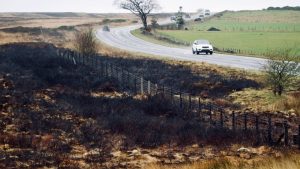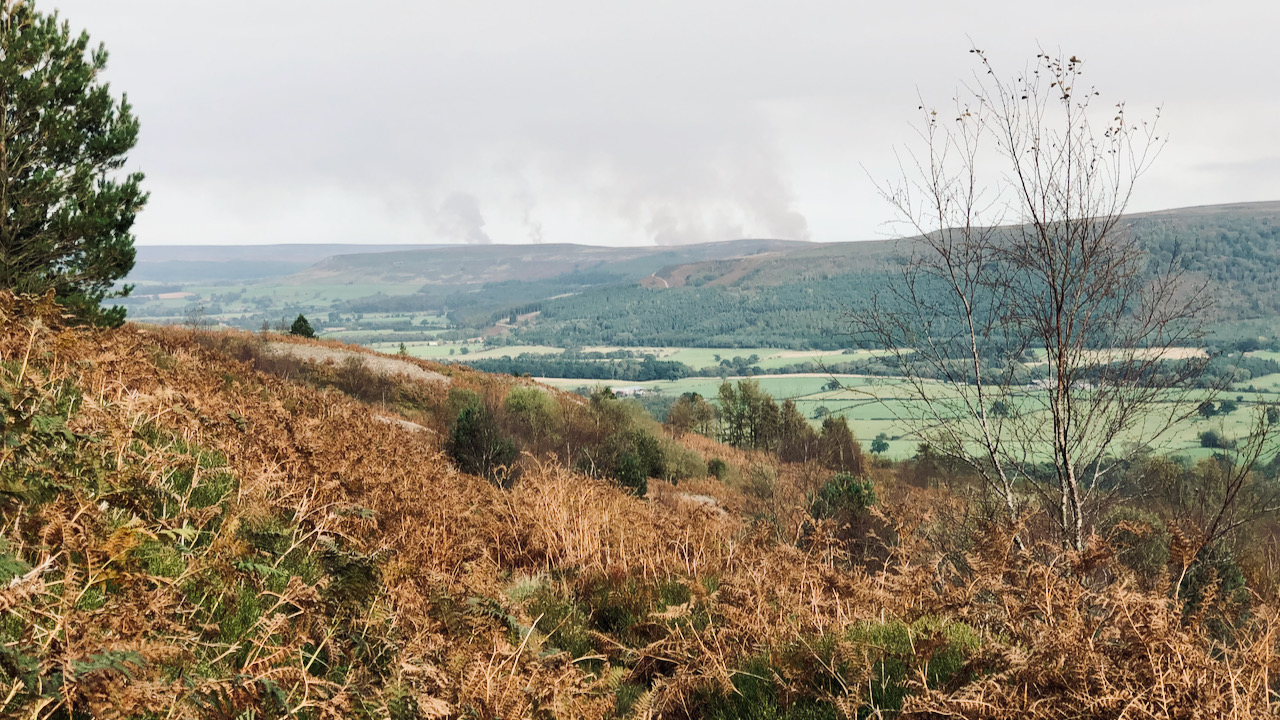It’s the delightful season of heather burning, and I found myself on Hasty Bank, the perfect vantage point to witness the breathtaking spectacle of over a dozen smoke columns gracefully dancing across a vast 180° panorama of the North York Moors, stretching from Gisborough Moor to the majestic Black Hambleton. In the photo above, these particular plumes were in the direction of Commondale Moor.
Now, why on Earth do they feel the need to set heather ablaze, you might well ask? Well, the stock answer is that it’s all about creating the perfect conditions for those beloved Red grouse. The little chicks have a penchant for feeding on the tender young heather shoots while taking shelter in the embrace of the older growth. So, in their wisdom, the gamekeepers have devised a cunning plan to perpetuate an endless cycle of manufactured vegetation, resulting in the charming patchwork quilt of a monoculture of heather.
Oh, how it thrills my heart to inform you that this delightful habitat does indeed nurture a multitude of endangered ground-nesting bird species! And gamekeepers pride themselves in telling us so. However, I must also solemnly report that any predators are not welcomed on these exclusive moors, and even magnificent raptors are verboten. In fact, just a short week ago, the news came in that a buzzard had been shot in Rosedale1‘Buzzard Shot & Critically Injured in North York Moors National Park’. 2023. Raptor Persecution UK (Raptor Persecution UK) <https://raptorpersecutionuk.org/2023/10/09/buzzard-shot-critically-injured-in-north-york-moors-national-park/> [accessed 16 October 2023].
But that’s not all. Gamekeepers insist that this fiery tradition is an indispensable method for keeping the flames of wildfires at bay, for it prevents the unsightly buildup of fuel. They claim to be skilled at taming the fires, ensuring they remain “cool burns.” Supposedly, this results in only the heather stalks going up in smoke, while mosses, lichens, and peat are left untouched. Well, at least in theory.

On two separate occasions during the past winter, I stumbled upon burns that had clearly lost control. In their unchecked enthusiasm, they had transformed stock fence posts into nothing more than charcoal. One can only imagine the distress of the invertebrates and amphibians who failed to make a hasty retreat from the flames.
Even if, by some miracle, the mosses and peat do manage to survive these infernos, one must ponder the dreadful consequences. The peat is a wondrous carbon vault cultivated over millennia. Its once-cherished role as a sponge in retaining water and protecting us from downstream flooding must surely be diminished. Supposedly not burnt, so they say, but even if that’s right, its delicate exposure to the elements will inevitably lead to desiccation and erosion.
And to think, there’s a more civilised alternative to this fiery madness — mowing the heather! Many of the more reputable grouse moor managers have already embraced this method, which suggests to a simple soul like myself that it’s just as economically sound as the fiery spectacle and far less risky.
In a world grappling with the perils of climate change, one might wonder if setting the moors ablaze is, perhaps, a tad irresponsible. But who am I to pass judgment on such a time-honoured tradition?
- 1‘Buzzard Shot & Critically Injured in North York Moors National Park’. 2023. Raptor Persecution UK (Raptor Persecution UK) <https://raptorpersecutionuk.org/2023/10/09/buzzard-shot-critically-injured-in-north-york-moors-national-park/> [accessed 16 October 2023]

Leave a Reply